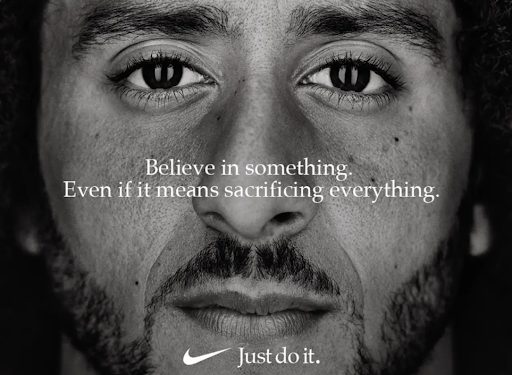How to Write Persuasive Ad Copy that Converts

Words have power.
There is no better proof than a well-written ad.
The foundation of a great ad is the ad copy – the words used to inspire, intrigue, move, amuse, or surprise the audience. Effective ad copy compels the viewer to take the action that the advertiser wants.
For anyone who has ever tried to write a great ad, you’ll know it is one of the hardest things to do.
But it won’t stop you from trying! So let’s start at the very beginning.
What is Ad Copy?
Ad copy refers to the text or written material that features in advertisements. For digital or print ads, ad copy includes the headline and other text that appears in the ad. For video commercials, ad copy is both the narration and on-screen captions or text.
The people who write ad copy are called ‘copywriters’. The express purpose of ad copy is to convince the audience to purchase the advertised product or service and increase sales.
Ad copy will vary in style, tone, and substance, depending on the goal of the ad. For example, the copy for a brand awareness ad will typically be more general and atmospheric, like this Nike ad:

Meanwhile, a conversion-oriented ad aims to inspire the customer to take a specific action, so the ad copy will focus on a more concrete offer or sale, like this Walmart ad:

Great ad copy is always compelling and persuasive, triggering emotions or otherwise engaging consumers towards the specific goal.
How to Write Ad Copy
Audience attention spans are short, and ad placements cost money. The key to a successful ad is fast viewer engagement. What’s more, each ad network has its own rules and recommendations about character limits. Every word counts, so copywriters must be extremely focused and disciplined.
At the same time, ad copy has to be creative and exciting – it must grab attention, stir emotions, provoke thoughtfulness, and drive conversions! If this sounds like a big ask, it is. But that’s what great ad copy is all about.
Here is a step-by-step guide for how to write ad copy that rises to the challenge:
1. Research your audience
For ad copy to be effective, it must speak deeply to the target audience’s concerns, feelings, perceptions, and sensibilities. The first step to writing that kind of ad copy is to understand your audience, and this means research.
Take a look at your customer data and use it to develop buyer personas. Flesh out those personas with every detail you can, and try to get inside their minds. This exercise helps you imagine what their pain points are, and how you can craft your ad copy to resonate with them. If possible, speak to real customers and ask them what’s on their mind, what they need and want from your product or service. This is the foundation of every effective ad copy.
2. Research the network
In advertising, context is everything. Is the copy for a billboard on the highway, a Twitter ad, or a native video ad on a news website? As well as researching your audience, it’s important to research the network you are advertising on, such as Facebook Ads, Google Ads, or a native advertising platform like Outbrain.
Understand the different ad formats and audience targeting options that are available, and craft the ad copy accordingly. For example, a Carousel ad requires copy for multiple cards that flow together as a story. A video ad promoted on social media to young consumers should be short and biteable. Pay attention to the character limits and advertiser guidelines for the different ad types and ad platforms too – these must be adhered to for your ad copy to be accepted.
3. Craft the ad copy
Once you’ve defined the audience’s pain points, the goal of the ad, and the specs for the ad format and network, it’s time to start crafting the ad copy. Writing ad copy is more art than science, and great ad copy requires a big dose of creativity and inspiration. There’s no manual, but there are some general ‘rules’ to follow when you sit down to write:
- Keep it simple and clear: Ads are designed for quick consumption. You have just a few seconds to grab the audience’s attention. What’s more, consumers are suffering from banner blindness – they are overwhelmed from constant exposure to ads. So make sure the ad copy is strong yet simple, and able to be understood almost at a glance.
- No hidden meanings or sophisticated word plays: There is so little time to turn heads, it’s not the right moment for clever, cryptic mind games. If the viewer needs to think too much, the message will go right over their heads. There’s one exception though – if your ad is highly targeted to a niche audience, you can and should leverage insider jokes, or references to current trends or events that may be appropriate.
- Use emotion (but only if it’s real!): This is a tricky one, because there is a fine line between genuine emotion and cringe-worthiness. To use emotion effectively, you need to really internalize and understand the audience’s pain. Never resort to cheap emotion; if you’re not feeling it, don’t try to imitate it in your ad copy.
- Solve the audience’s problems: One of the biggest mistakes you can make in ad copy is putting the company at the center. Sure, you may have the most advanced product on the market, but that in itself won’t mean much to the target audience. Instead, focus on the benefits of the product for them. How does it solve their problem? How does it make their lives easier or better? That’s always the central focus of great ad copy.
4. Concentrate on the headline
Ad copy only has a second or two to grab the audience’s attention, and that’s what makes the headline so important. The headline is the star of the show, so be sure to spend a disproportionate amount of time working on it.
A great headline is sensational, but not clickbait-y. A great headline is clever or inspiring or ironic or cheeky. A great headline stands out. Exactly what makes it stand out is hard to define, because it depends so much on the audience, the brand, the ad message, and the goal. Nevertheless, there are several guidelines for writing great headlines for native ads, based on actual user behaviors on the Outbrain network. For example, headlines as questions work well, and negative words like “never” work better than positive ones, like “always”.
Measuring Ad Copy Success
Writing ad copy is just the first part. To find out whether the ad copy is achieving its goal, you need to measure its performance.
There are two main metrics that let digital marketers know whether ad copy is successful: clickthrough rate (CTR) and conversion rate (CVR).
- Clickthrough rate (CTR): CTR is a measure of how many people who saw the ad clicked on it. When a person clicks on an online ad, it means the ad copy and/or image were compelling or interesting enough to make them want to find out more. A high CTR indicates that the target audience is engaging with the ad. However, it does not mean that they will necessarily buy your product or service. That is measured by conversion rate.
- Conversion rate (CVR): Once the reader has clicked on an online ad, they arrive on your website, landing page, product page, or whichever URL you choose. Here is where the conversion happens: to buy a product, watch a video, download content, install an app, request a demo, contact the sales rep, or something else. Your ad copy got the click; now your landing page design and copy has to get the conversion.
A/B testing ad copy
Ad copy has to make an impact, draw attention, and spark interest. How can you know which ad copy does all these things? By testing.
Rigorous testing and optimization is the path to effective ad copy, and A/B testing is a method of choice for advertisers. A/B testing is when two variations of ad copy are served at the same time to the target audience. Half the audience will see one version of the ad, while the other half sees the second version. Then CTR and CVR of both versions are tracked, and the results reflect which ad copy was more effective and engaging.
By testing different ad copy over and over, it is possible to optimize and finetune your ad campaigns to get better results over time.
Ad copy generator tools
Remember, ad copy is typically short-form content, often extremely short! Depending on the ad type and network, you may be limited to only a few dozen characters or words. This also places limits on your creativity.
On the other hand, even a small change in copy can make a big difference. For instance, we’ve known for over a decade that odd numbers work better than even numbers in a list-style headline, bringing a 20% increase in CTR.
That’s why testing ad copy is so important; it helps you figure out which ad copy works best with your audience. This is a time consuming process, so an ad copy generator tool can be a huge help.
Ad copy generator tools are based on artificial intelligence and computerized language processing to instantly generate several versions of ad copy, based on your inputs, such as keywords, tone, audience, message, and more. Ad copy generators are also designed to maximize clicks and conversions, drawing on real-world performance data of thousands of ad copies and automatically optimizing the copy in accordance with that data.
Here are three popular ad copy generators you can use to create ad copy faster and make your ad copy testing process much more efficient:
Anyword
This tool can generate ad copy, landing page copy, and more, increasing conversions by 30%. Anyword conveniently offers a free or low-cost monthly plan for very small businesses. Try it here
Jasper
Jasper (formerly known as Jarvis) is an award winning AI-based writing assistant that gets consistently good reviews. There’s a 5-day free trial offer to get you started. Try it here
Copy Shark
This tool works in over 100 languages, providing one-click variations for ad copy for Google and Facebook ads. Affordable annual or monthly fees get you access to the AI-powered tool. Try it here
Make Your Ad Copy Count
Every ad you promote is an opportunity to engage and convert customers. Make the most of your ads by working hard on your ad copy. No matter who the audience or what the goal, always follow the three steps to effective ad copy: research, write, test. Add a touch of inspired creativity and you’re all set.



